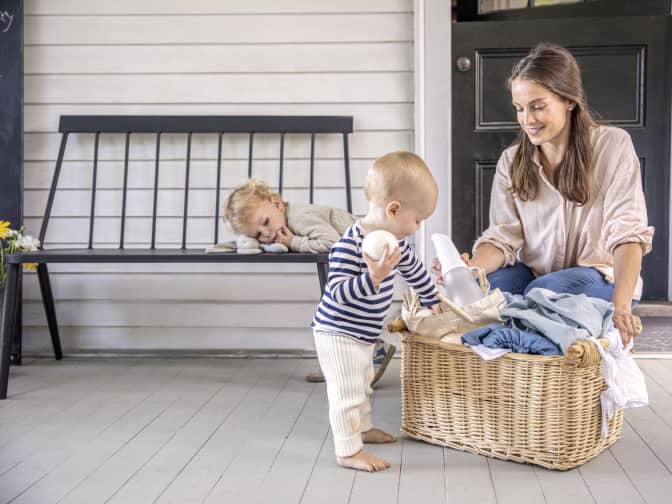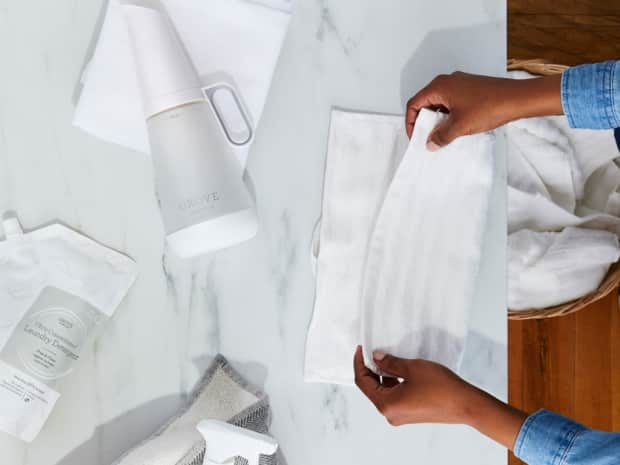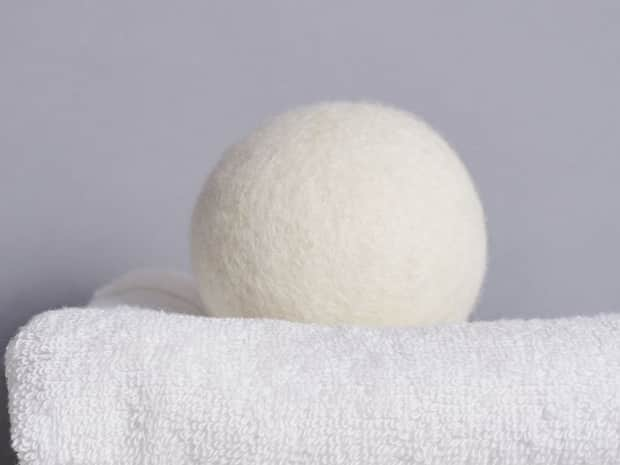Crocking
When dyed fabrics rub against each other, color can transfer from one to the other.
That’s called crocking — and it can happen in the washing machine and the dryer.


Last Updated: September 20, 2021
Running colors in your laundry got you down? Stop the bleeding, slow the fading, and keep your colors bright — here’s how to wash colored clothes the right way.
The very best way to keep your colored clothes from fading is to wash them less frequently. And that’s a great way to conserve water, energy, and laundry supplies, too! Did you expect us to pitch you with specialty laundry detergents right away? Guess again!
We’re starting this guide on how to wash colored clothes by suggesting you ask yourself:
Grove laundry expert Angela Bell likes to keep a good enzyme-based stain remover on hand to spot-clean her clothes so she doesn’t have to wash them as often. “This allows me to embrace my mess-prone life yet still look fresh without washing the entire garment. I just spray it onto the stain, allow it to sit for a few, and blot clean with a wet cloth,” she says.
Now, if you’re holding a pair of worn socks or underpants and wondering if you should wash them, the answer is a resounding yes! But everything else? If it ain’t soiled, and it don’t stink — don’t wash it!
But when your colored clothes are soiled or do stink, here’s how to wash them to keep them colorful and bright — without harsh chemicals!
Dyed clothing fades in three main ways:
When dyed fabrics rub against each other, color can transfer from one to the other.
That’s called crocking — and it can happen in the washing machine and the dryer.
Some bleed a lot and stain other fabrics in the water. Some bleed very little and don’t affect other clothes.
Bleach chemically strips color from your clothes. The UV rays from sunlight degrade chromophores, which are chemical bonds present in dyes that absorb light at different wavelengths.
The Library of Congress explains this process simply and briefly.
Grove Tip
Many garments will stop bleeding dye after a few washes. Others will bleed every time. Here’s what to do to help prevent it:

The first step to washing colored clothes is to properly sort your laundry. In general, you should wash dark, brightly colored, light-colored, and white clothing in separate loads.
If you want to get more specific with your sorting, put your clothes into these categories:
Here’s how to prepare your sorted clothes for washing:
The labels sewn into your clothing items aren’t just there to scratch your neck. They tell you whether the garment can be machine-washed and dried — and if so, what cycle and temperature to use.
If you’re not familiar with the care symbols used on clothing labels, .our super-helpful, illustrated laundry symbol guide will clear it all up for you.
Pre-treat stains on colored clothes with a natural stain remover. If you’ve never treated a particular garment, test it on an inconspicuous spot first.
Let the stain remover soak in for a few minutes, then wash as usual. Before you toss it in the dryer, check to make sure the stain is completely gone. If not, retreat and rewash.
Learn how to get all sorts of stains (poop, blood, wine) out of nearly anything (carpet, clothes, upholstery) with our helpful, how-to Stain Busters articles.

Wondering who Grove is, what types of products we offer, and how to get a free gift set when you sign up? Learn more about flexible monthly shipments, customizing your shipment, and joining millions of happy households — no monthly fees or commitments required.
You’ve sorted the clothes, checked the labels, and pre-treated the stains. Time to wash!
Here are the basics for washing colored clothes.

Wash dark clothes in cold water, since warm water and hot water open up the fibers and let dye escape more readily, causing some colors to fade faster or bleed more easily.
These days, most detergents are formulated for cold water washing to save energy, so you can — and should — wash pretty much everything in your closet in cold water.

Unless your colored clothes are caked in dried mud or otherwise heavily soiled, wash them on a gentle (or delicate) cycle.
It agitates the clothes less vigorously than the permanent press and normal cycles, and it has a slower spin cycle, so your clothes — and their colors — will last longer.

Liquid laundry detergent is better than powder, which may leave residue on your clothes and dull their colors. Natural laundry detergents are better than conventional ones, which usually have toxic ingredients that can do a number on your clothes.
Some detergents are formulated specifically for colored or dark clothes, but any quality natural detergent will do.

Grove Tip
Chlorine bleach? No, never.
But non-chlorine bleach — more commonly known as oxygen bleach or color-safe bleach — is hydrogen peroxide-based, so it’s safe to use on all colors and most fabrics.
Dry flat or line-dry any clothes that can’t be machine-dried according to the care label. Even if they can be machine-dried, your clothes will stay brighter if you line-dry them — but keep them out of direct sunlight, which will fade some colors faster than a high-heat dryer.
To machine-dry your colored clothes, follow these general guidelines:

Dry your colored clothes on low heat. High heat fades colors faster, and it sets stains, making them virtually impossible to remove.

For all of your colored clothes, choose the gentle (delicate) cycle on your dryer, which reduces color-fading friction and general wear and tear.

Check for stains before you put colored clothes in the dryer so you don’t unwittingly set them. Pre-treat lingering stains again, and rewash the garment before you tumble it dry.
Want more sweet laundry-day tips? You’ll find all of them in our Ultimate Guide to Doing Laundry.
Grove Tip
If your red bled, and now your whites are pink, act right away — if you let the garments dry, you’ll have a much harder time getting the red out.

We've pulled the top 9 laundry detergents as determined by Grove members. Select from any on the list and get them delivered to your door!

Wishing your favorite white shirt was actually white again? With our step-by-step guide, we’ll show you how to wash white clothes to make them shine.

Handwashing clothes is an easy, effective way to clean any garment, especially delicates. We’ll break it down in our guide on how to hand wash clothes.

Are wool dryer balls better than dryer sheets? Learn the basics about eco-friendly dryer balls.